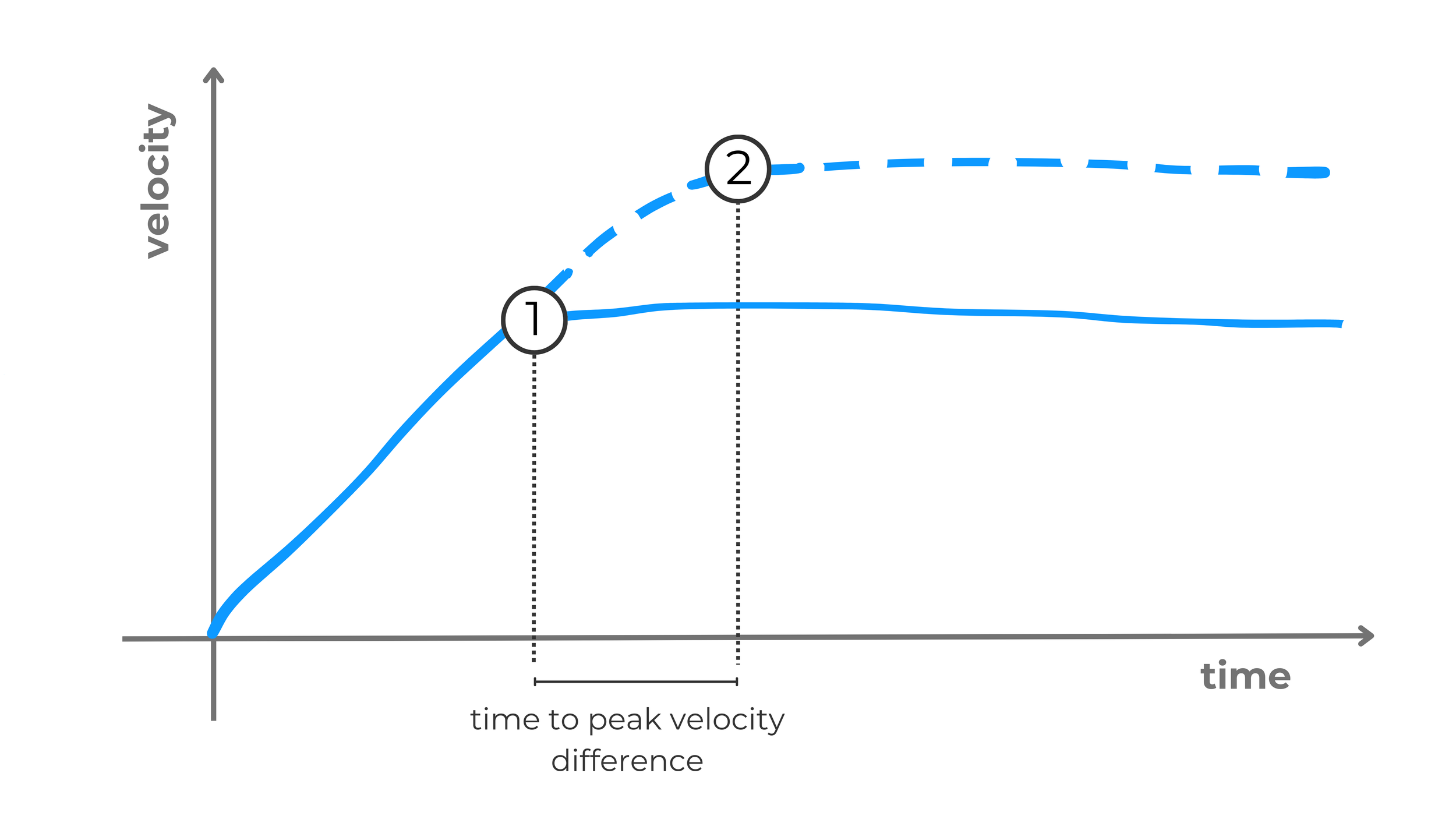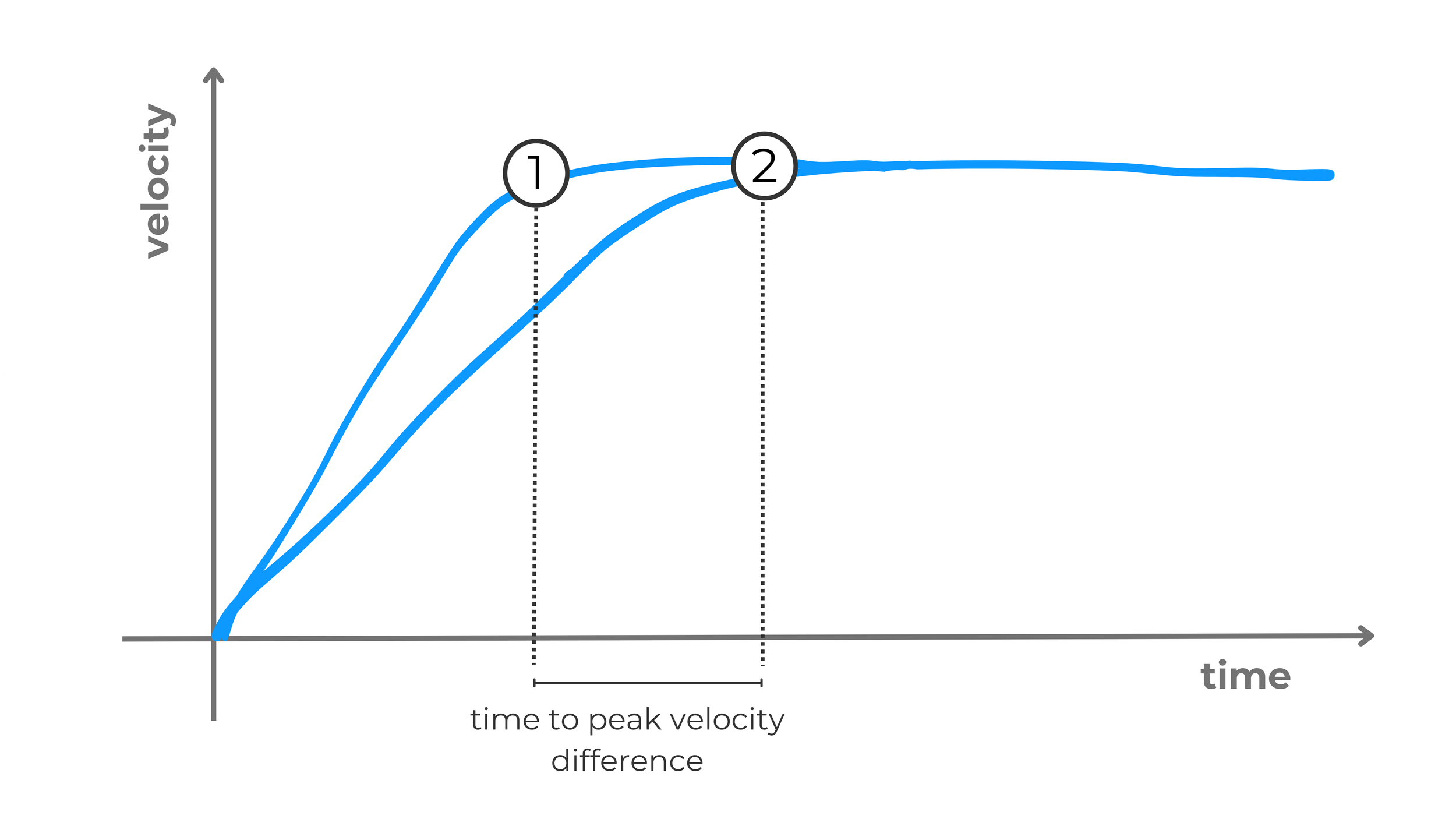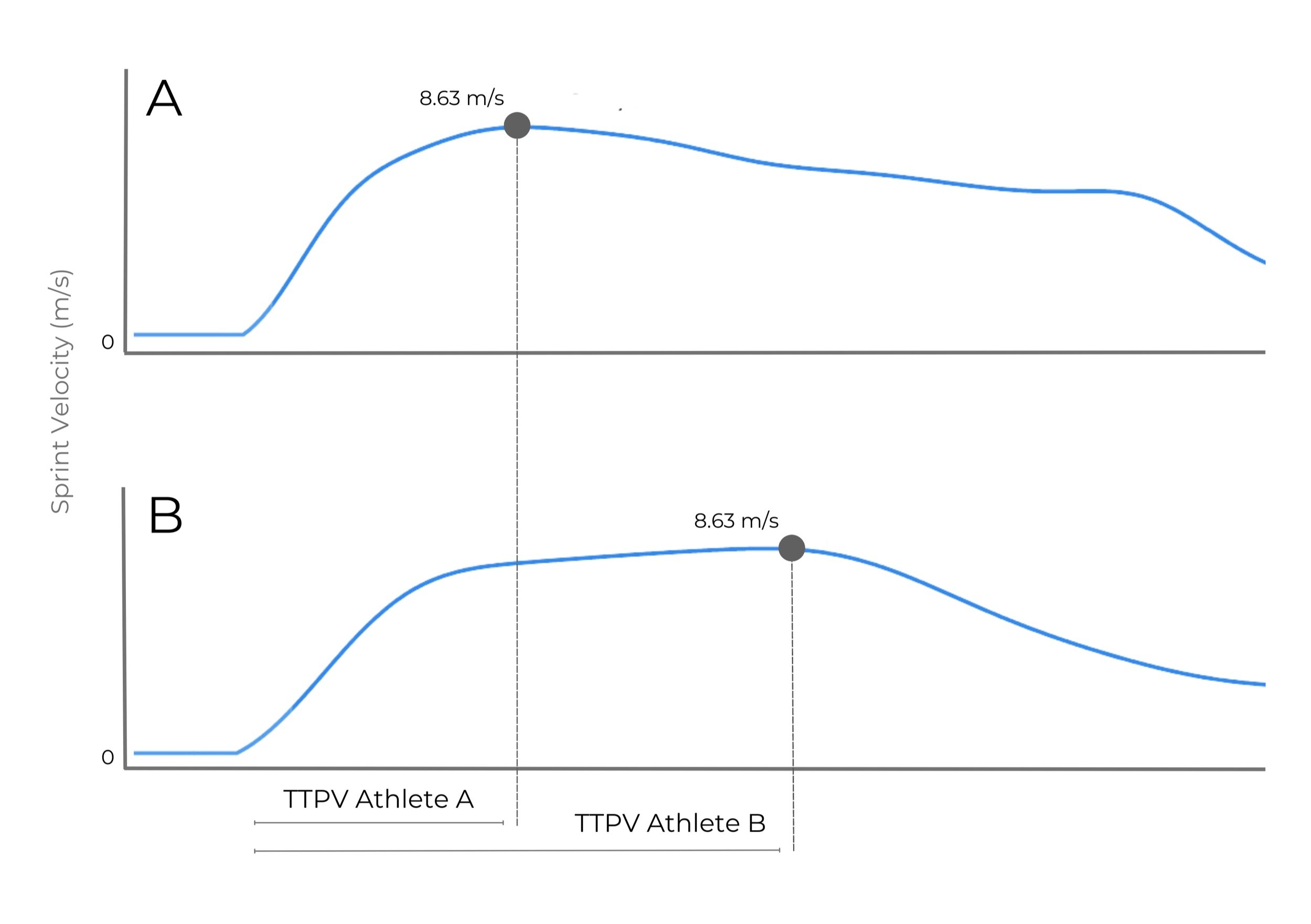Time-to-Peak Acceleration vs. Time-to-Peak Velocity: What Performance Coaches Need to Know
In high-performance sports, where sprinting is a crucial performance determinant that can give athletes a competitive edge against their opponents, coaches rely on various metrics to assess speed and acceleration capabilities. Two key metrics that provide valuable insights are the time to peak acceleration and the time to peak velocity. This blog post will discuss the differences between these metrics and what they reveal about an athlete's sprint performance, which can help coaches tailor training programs more effectively.
Velocity vs. Acceleration
Velocity is the vector of speed, representing both a magnitude (i.e., how fast an object moves) and a directionality (i.e., in what direction the object is moving). Acceleration is also a vector that refers to the rate at which an object’s velocity changes. For example, an athlete sprinting out of starting blocks has a positive acceleration, but once they hit and maintain their top speed, there is no longer any acceleration.
Time-to-Peak Acceleration (TTPA) in Sprinting
Time to peak acceleration refers to the time an athlete takes to reach their maximum acceleration during a sprint, usually achieved within the first 10m from a stationary start. This metric is commonly used to describe an athlete's explosive power and ability to generate force quickly; a shorter time to peak acceleration may indicate a higher rate of force development, which is crucial for quick bursts of speed.
Figure 1. Athlete A (top) takes more strides and time to cover the same ground than Athlete B (bottom), who can accelerate more quickly.
Time-to-Peak Velocity (TTPV) in Sprinting
On the other hand, TTPV refers to the time it takes for an athlete to reach their maximum speed during a sprint. While a shorter time to peak velocity may lead you to believe that the athlete has a high propensity for rapid acceleration, the overall magnitudes of peak sprint acceleration and velocity are required to contextualize TTPV accurately as demonstrated in the images below:
Figure 2. Similar magnitudes of peak acceleration (i.e., initial upward slope) but sustained over different durations will result in a later TTPV but higher peak velocity achieved.
Figure 3. Similar peak velocities were achieved, but magnitudes of peak acceleration impacted TTPV.
Considering this, rather than stand-alone metrics for deriving training insights, TTPA and TTPV are valuable pieces that contribute to revealing an athlete's “performance puzzle”. To demonstrate this further, Figure 4 below illustrates two distinct sprint velocity profiles in which both Athletes achieve similar max sprint speeds but in very different amounts of time.
While Athlete A demonstrates a remarkable ability to accelerate more quickly off the blocks to reach their peak velocity sooner, Athlete B seems to be able to dig deep in the later portions of the sprint and continue to increase their speed to match Athlete A’s peak velocities hit. Despite tying the race, two very different performance strengths are revealed: Athlete A’s high explosive ability vs. Athlete B’s increased capacity for sustaining and building velocity when given sufficient room.
Take Action
Time-to-peak acceleration and time-to-peak velocity provide insight into the different capacities of different athletes. Time-to-peak acceleration focuses on explosive power and quick bursts of speed, while time-to-peak velocity highlights an athlete's ability to maintain high velocity. By analyzing these metrics together, coaches can tailor training programs to enhance an athlete's strengths and address areas for improvement, ultimately maximizing their overall sprinting performance.





